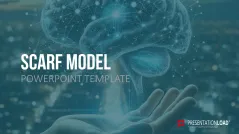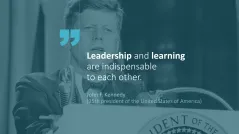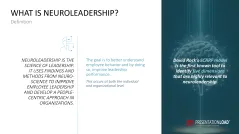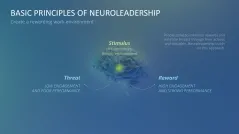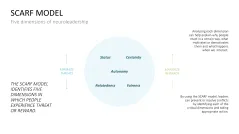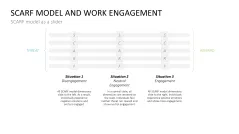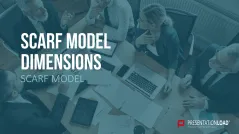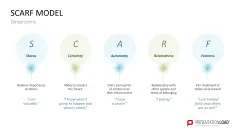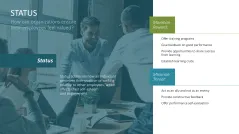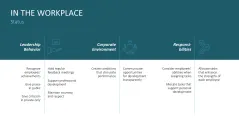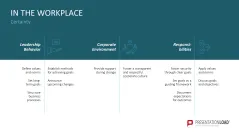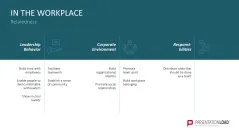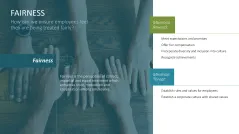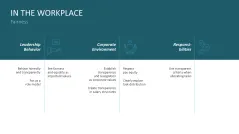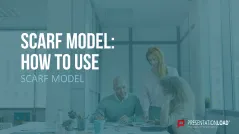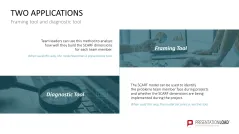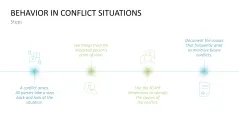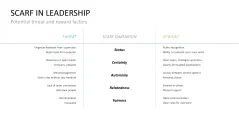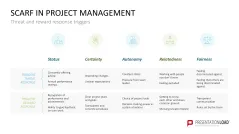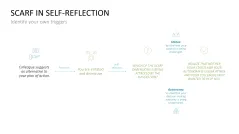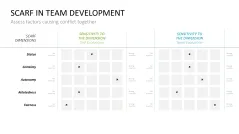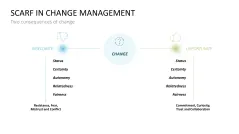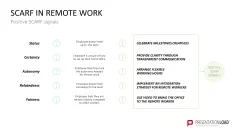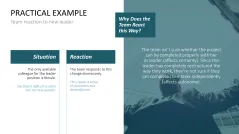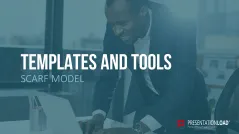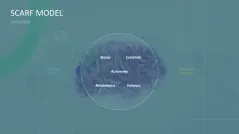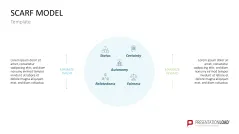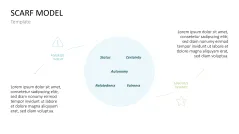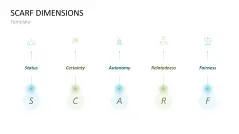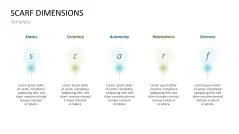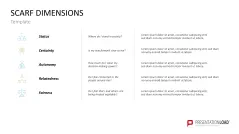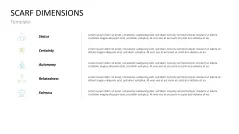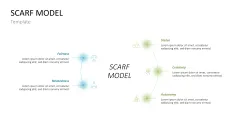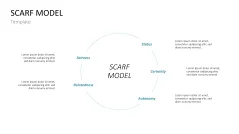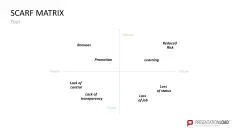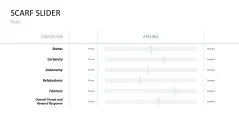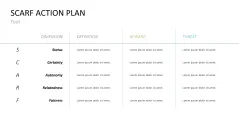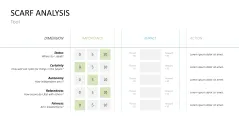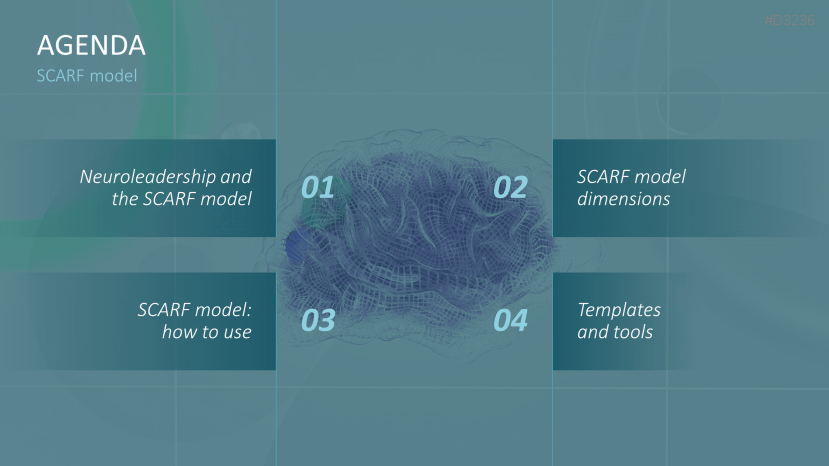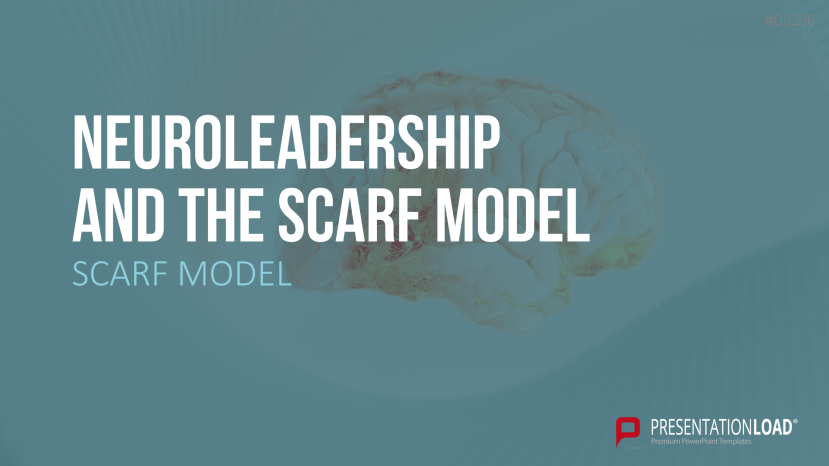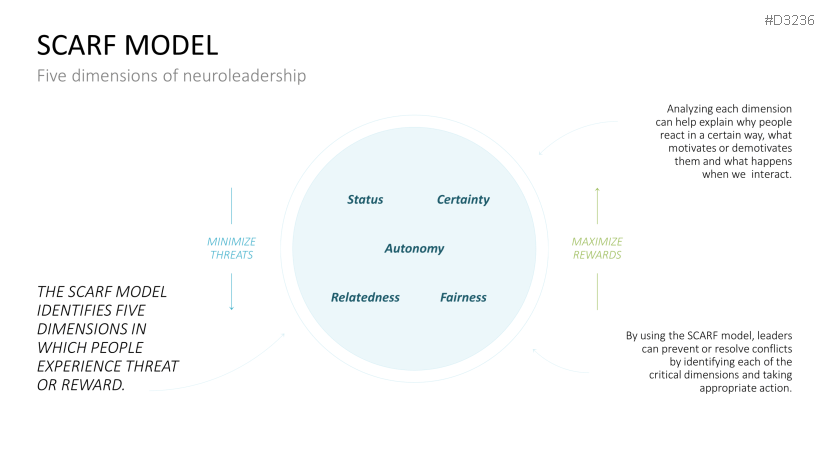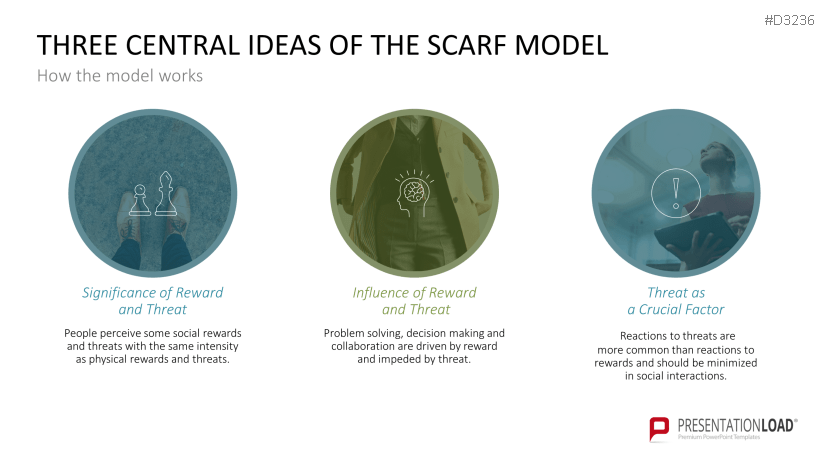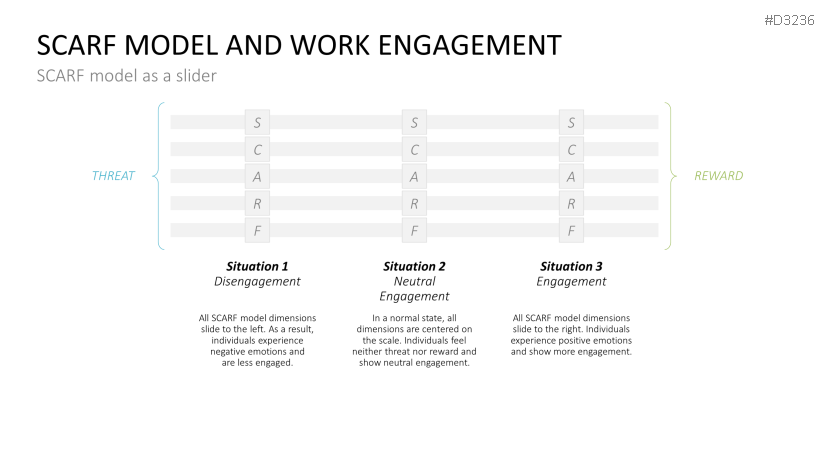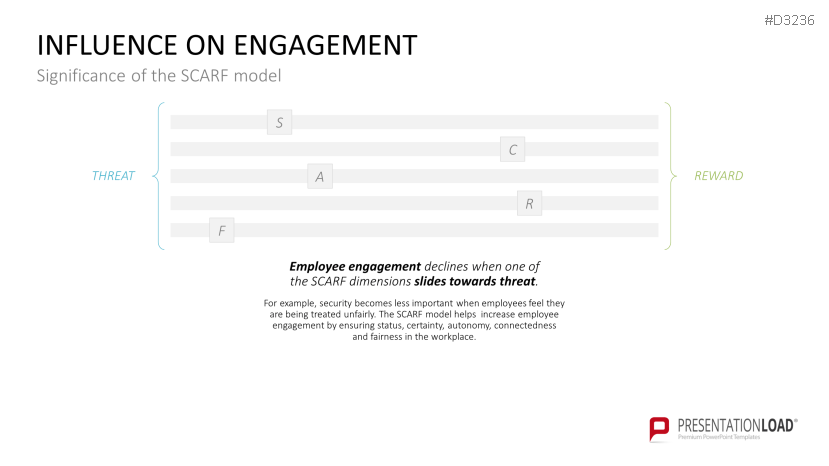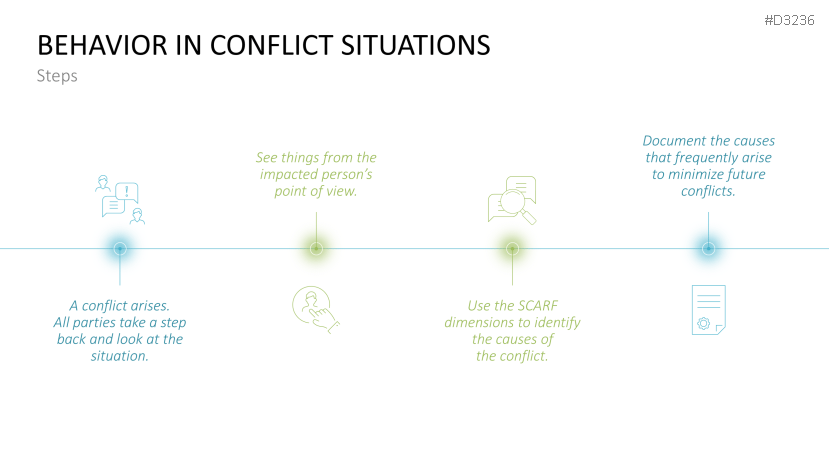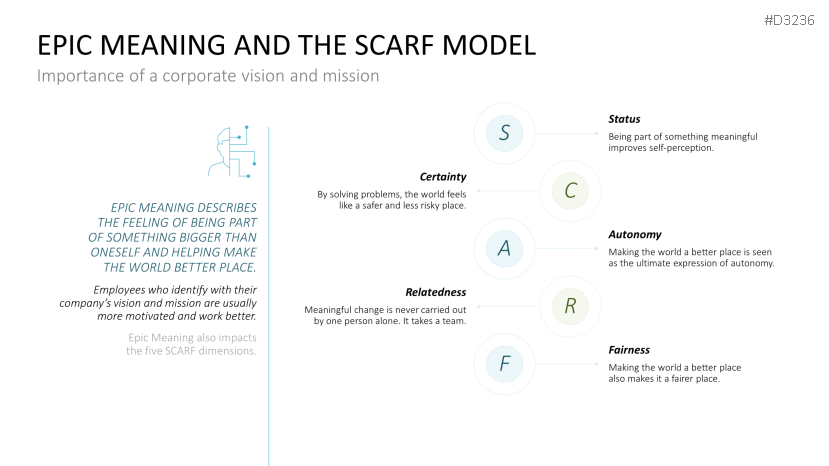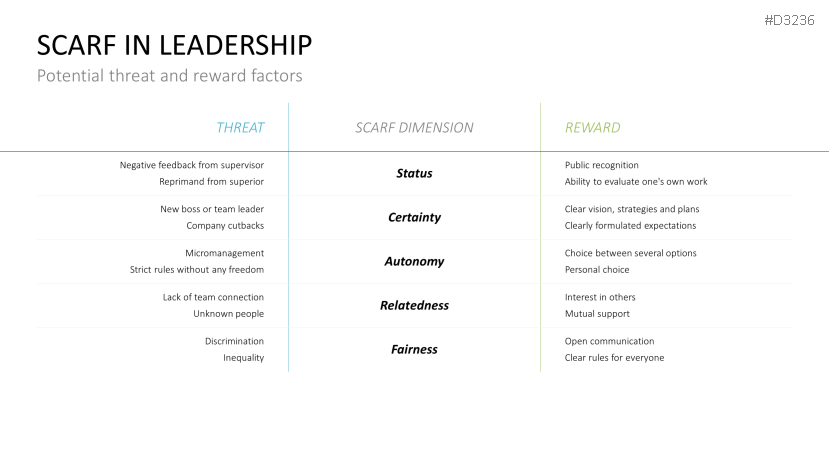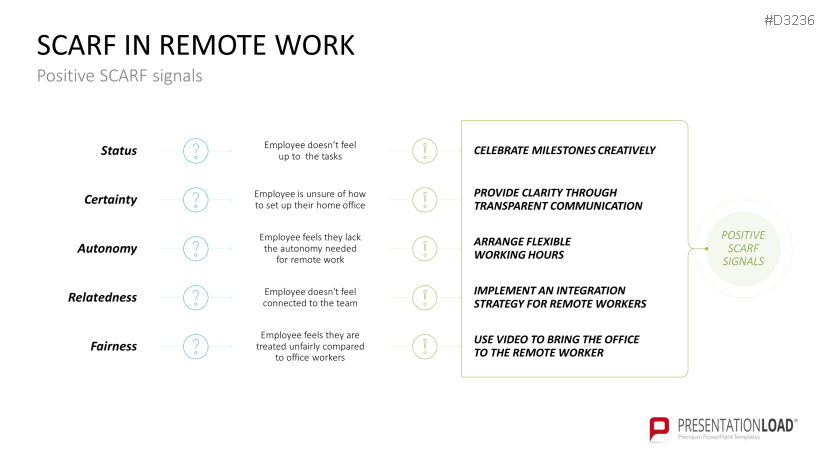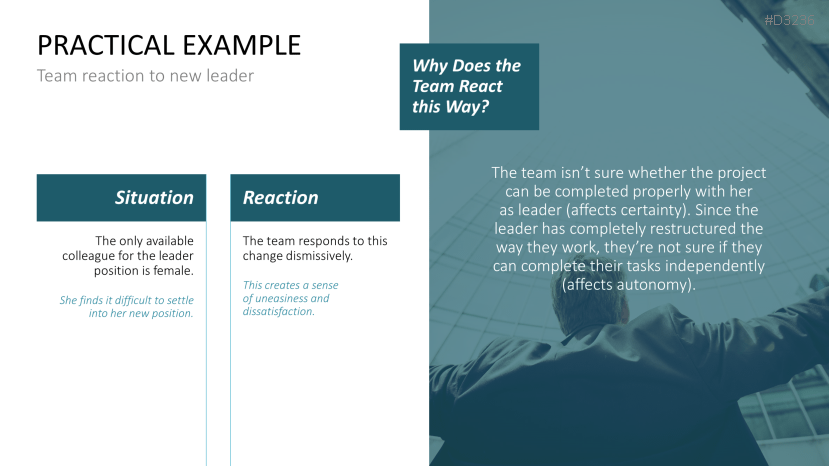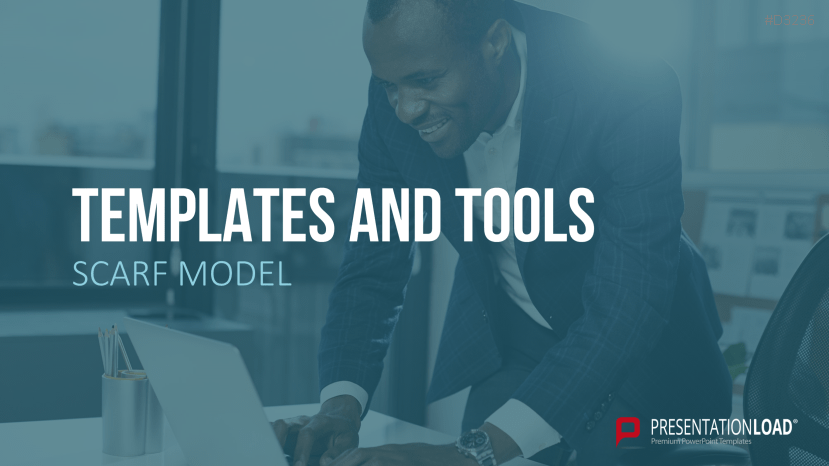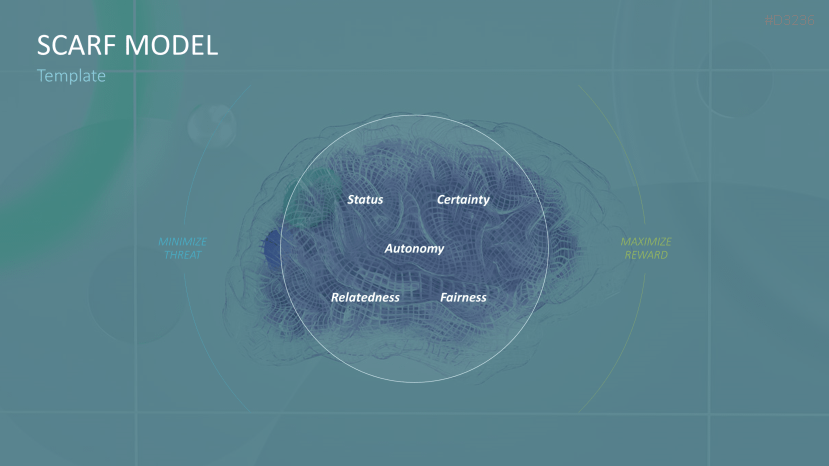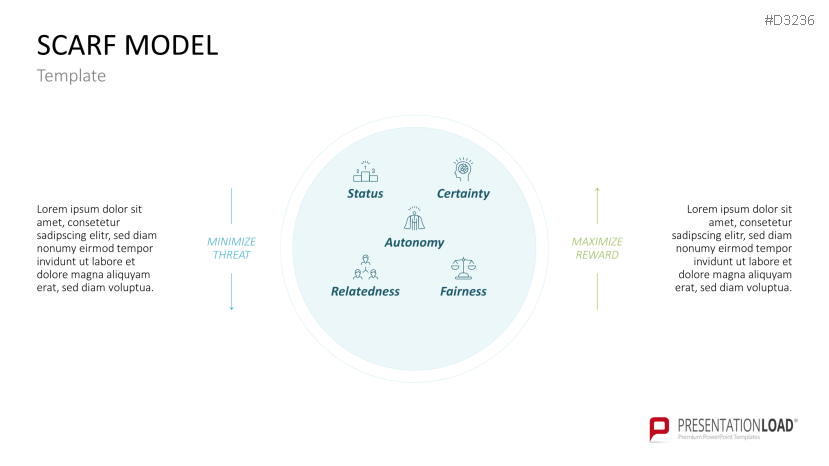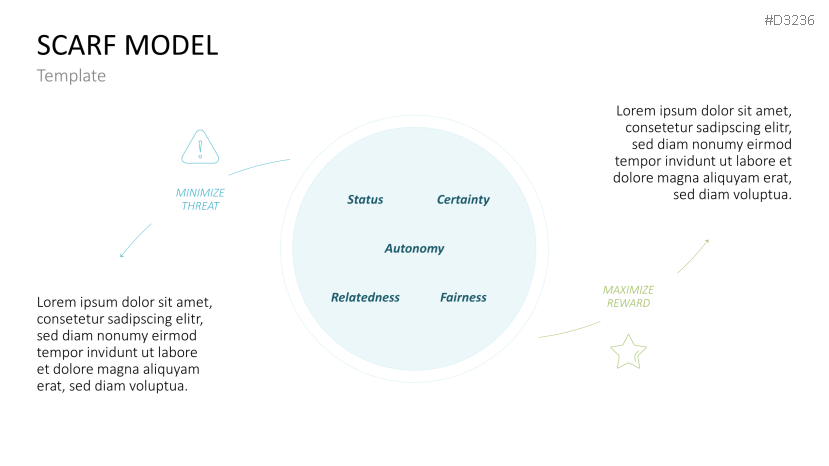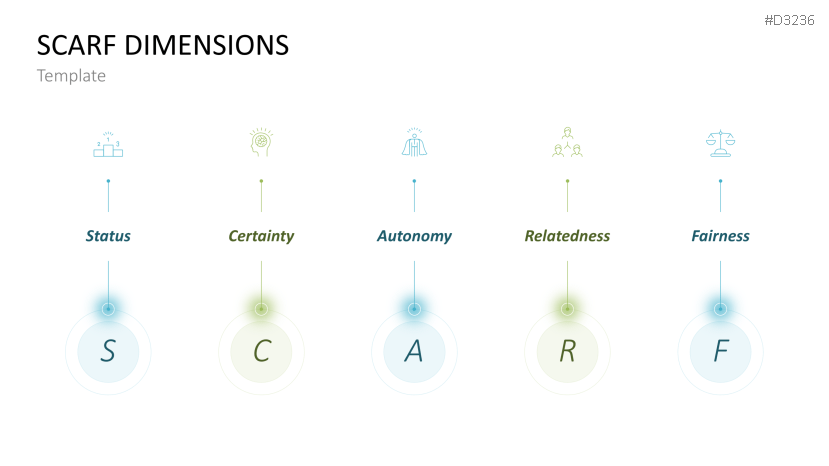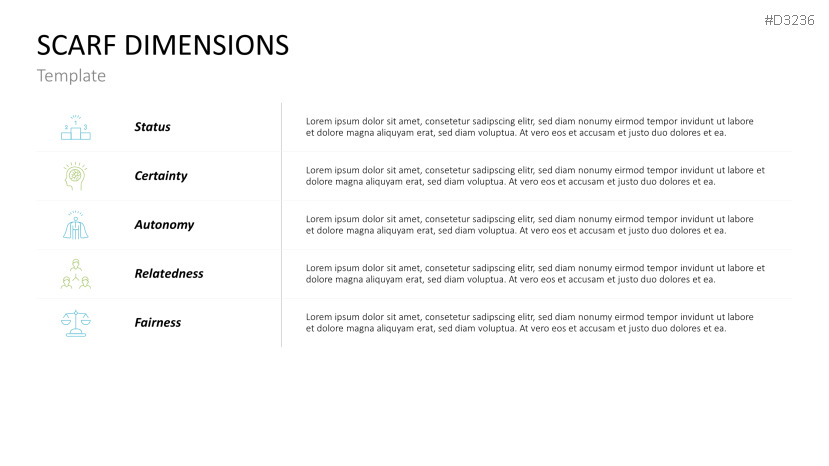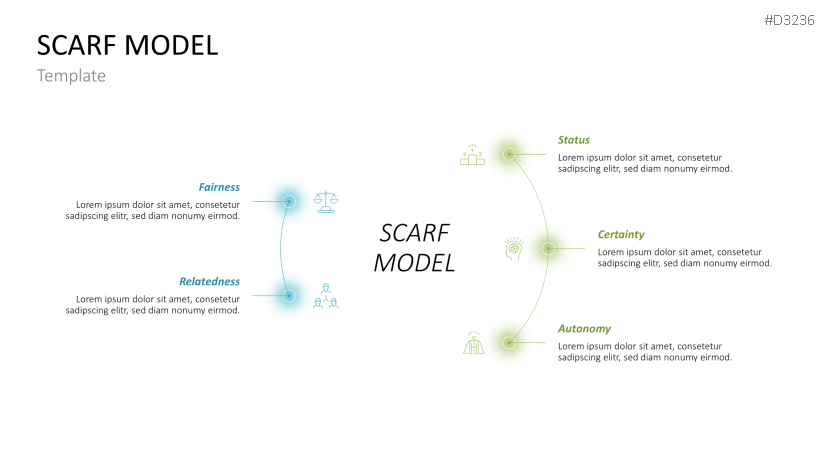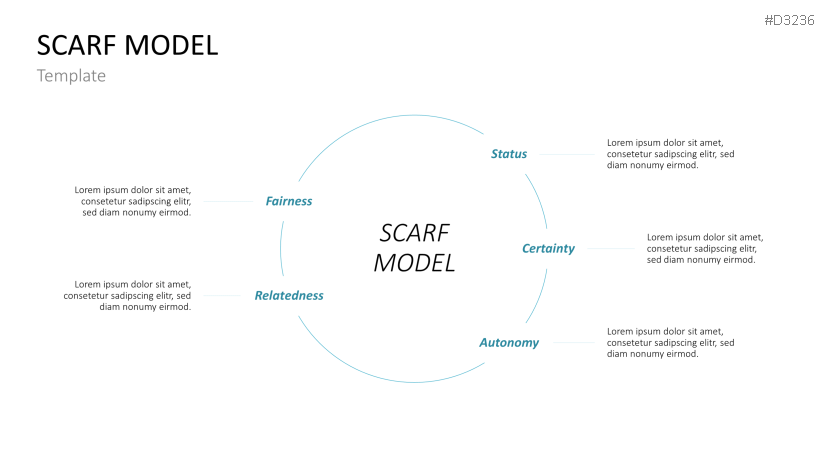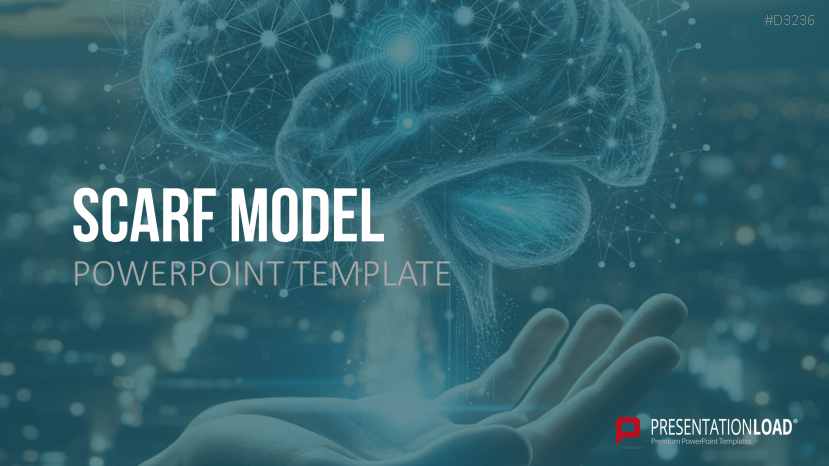
Neuroleadership and the SCARF model
Neuroleadership uses findings and methods from neuroscience to improve employee management. The purpose is to gain a better understanding of employee behavior and to develop suitable leadership measures that put people first. David Rock's SCARF model was the first tool to name dimensions that are key to neuroleadership. These five dimensions include status, certainty, autonomy, relatedness and fairness. These dimensions can be used to analyze and explain employee behavior more closely.
How does the SCARF model work?
The basic principle of neuroleadership is built on the human instinct to respond to reward or threat. People inherently look to maximize rewards and minimize threats. The SCARF model is also based on this principle. Stimuli can be categorized as either reward or threat within the five dimensions. Threats lead to negative reactions, while rewards trigger positive reactions. When certain behaviors or conflicts arise, the model is used to analyze which of the five dimensions is threatened. This provides an opportunity to take measures that minimize the threat to the affected dimension. The goal for leaders is to maximize reward responses and minimize threat responses.
How can the SCARF model be used?
The SCARF model isn't limited to conflict resolution. It can be used in all situations in which human behavior plays a role. It not only enables us to overcome conflicts, but also to engage in deeper self-reflection so that we can understand why we react the way we do in certain situations. The model is also extremely valuable in change management, team development, projects and remote work. Regardless of whether the goal is to analyze behavioral patterns or avoid specific conflict situations, the SCARF model is an extremely effective tool.
Everything on the SCARF model in one template
Our new template provides you with all the essential information you need to understand and apply the SCARF model. Present the background and functions of the SCARF model and illustrate the role each dimension plays in the behavior of your employees. You'll also receive fully editable templates which you can customize with your own SCARF analysis results and present with minimal effort. Gain an even better understanding of your employees with our SCARF model PowerPoint template.
With the SCARF model template for PowerPoint, you can
- present the key principles of neuroleadership.
- explain how the SCARF dimensions affect the behavior and reactions of your employees.
- use our editable templates to visualize the results of your own SCARF analysis.
This PowerPoint template includes:
- Quote
- Neuroleadership and the SCARF model
- What is neuroleadership?
- Six neuroleadership theses
- Basic principles of neuroleadership
- SCARF model
- Three central ideas of the SCARF model
- Threat and reward
- Conflicting demands in the SCARF model
- SCARF model and work engagement
- Influence on engagement
- Objectives and applications
- Impact of current conditions
- SCARF model dimensions
- SCARF model
- Status
- Certainty
- Autonomy
- Relatedness
- Fairness
- Effects in the workplace
- SCARF model: how to use
- Framing tool and diagnostic tool
- Behavior in conflict situations
- Epic Meaning and the SCARF model
- SCARF in leadership
- SCARF in project management
- SCARF in self-reflection
- SCARF in team development
- SCARF in change management
- SCARF in remote work
- Practical example
- Template and tools
- SCARF model
- SCARF dimensions
- SCARF matrix
- SCARF slider
- SCARF action plan
- SCARF analysis
